The history of the Calais 'Jungle' camp and how it's changed since 1999
- Published
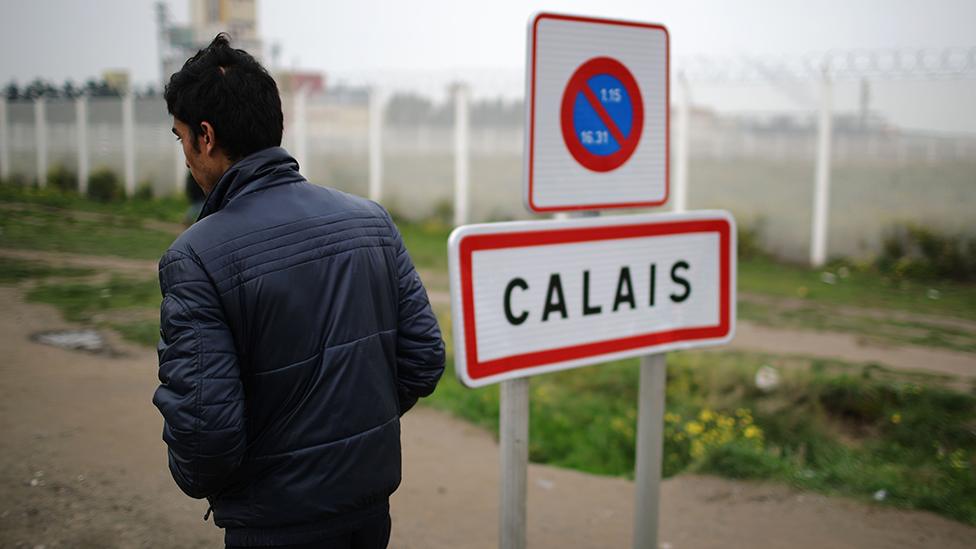
The so-called Jungle camp in Calais is being cleared for demolition.
About 7,000 people are being moved out to different areas of France because the camp is being bulldozed.
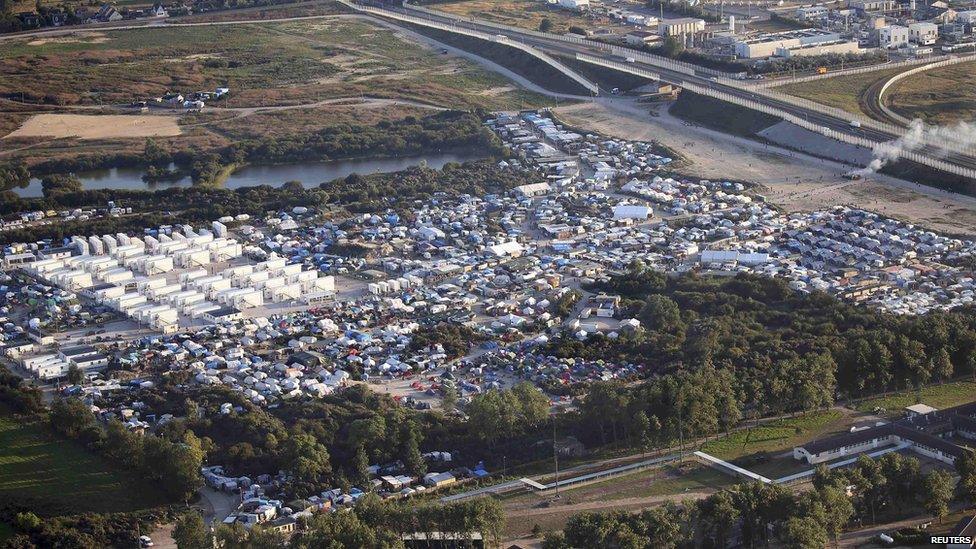
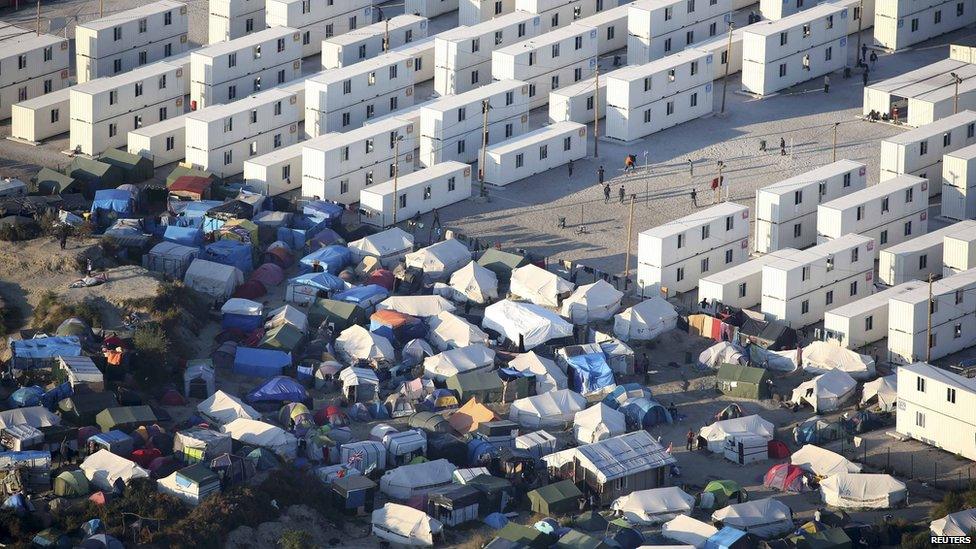
Some migrants live in temporary cabins, whilst others have to live in tents
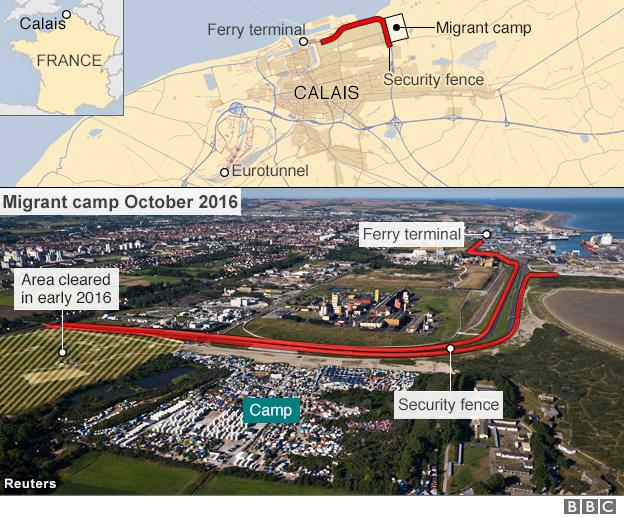
But this isn't the first time this has happened.
There have been migrant camps in Calais for almost 20 years.
We look at how the camp started and what happened the last time the camp was closed down.
1999: A migrant centre first opens
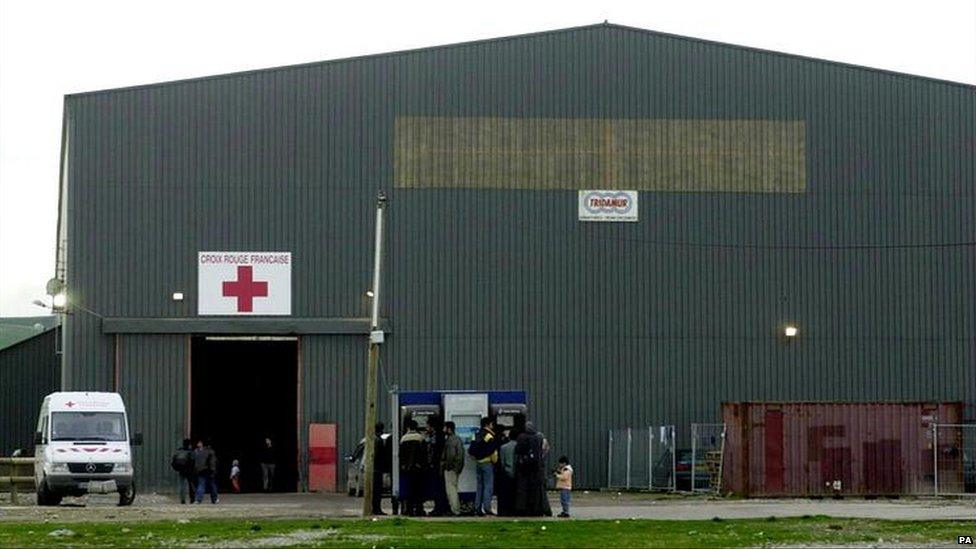
The Sangatte migrant centre was an old Eurotunnel building
The first centre was opened in 1999 by the Red Cross in Sangatte, a village about a mile from the Eurotunnel entrance to the UK.
Read more: Looking back at love in the Calais 'Jungle'
It was started, with the help of the French government, because of the number of people wanting to get to the UK.
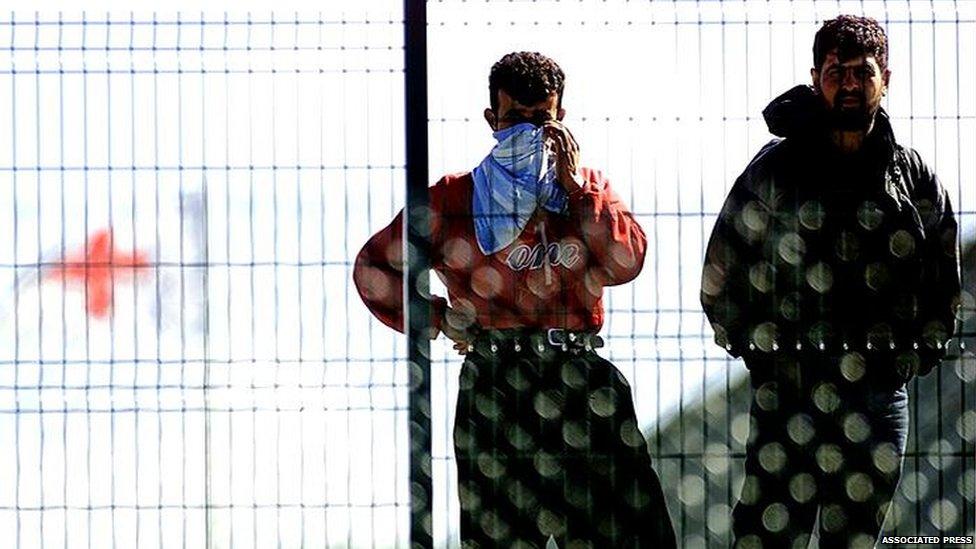
Refugees at the old Sangatte centre before it was closed in 2002
Most of the arrivals were from Kosovo in eastern Europe, Iraq and Afghanistan.
The camp swelled to about 2,000 people in 2002, but was closed that year as the British government was worried about the number of illegal immigrants coming to Britain from there.
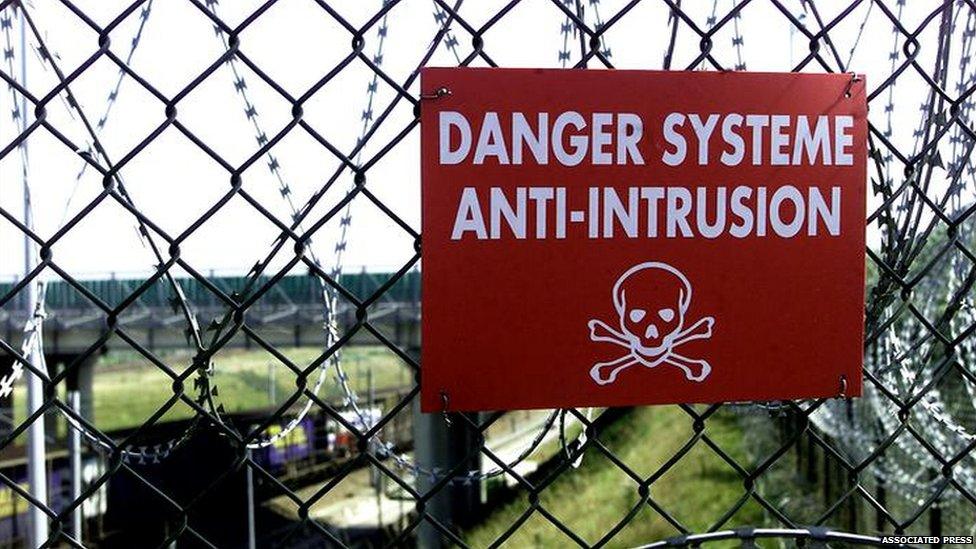
A danger sign on the security fence at Sangatte
2002: The first 'Jungle' is created
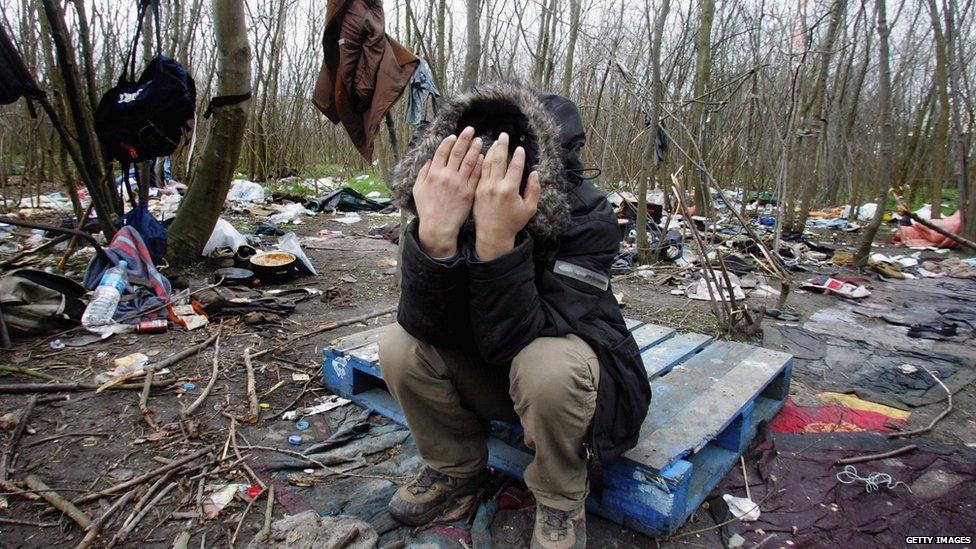
A refugee living in the first Calais "jungle" which was in the forest surrounding Sangatte
When the centre at Sangatte was closed, many of the refugees just moved into the surrounding woods.
An illegal makeshift camp was created, which became the first "Jungle" camp.
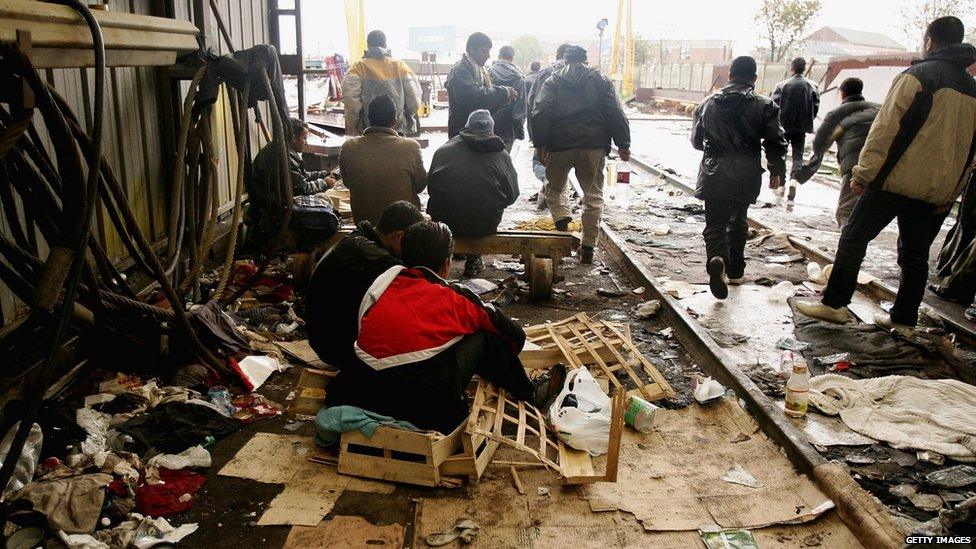
Living conditions were squalid
The camp was dirty and unsafe and there were stories of the residents having to wash in the water from a nearby chemical plant.
The camp was bulldozed in 2009, when about 1,000 people were living there.
Many of them were arrested but released soon afterwards without anywhere to go.
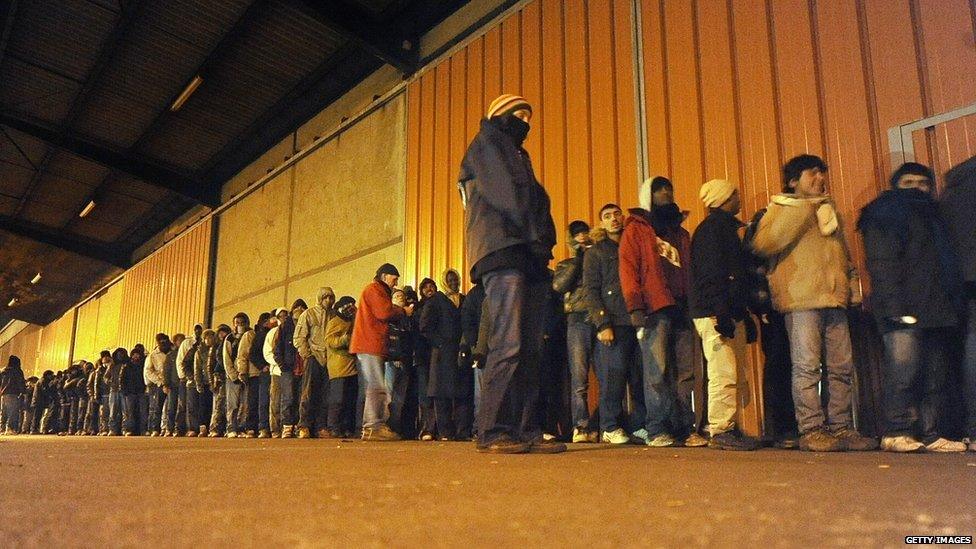
Refugees queuing for dinner in 2008 - they relied on charities for food much of the time
2014: The second 'Jungle' opens
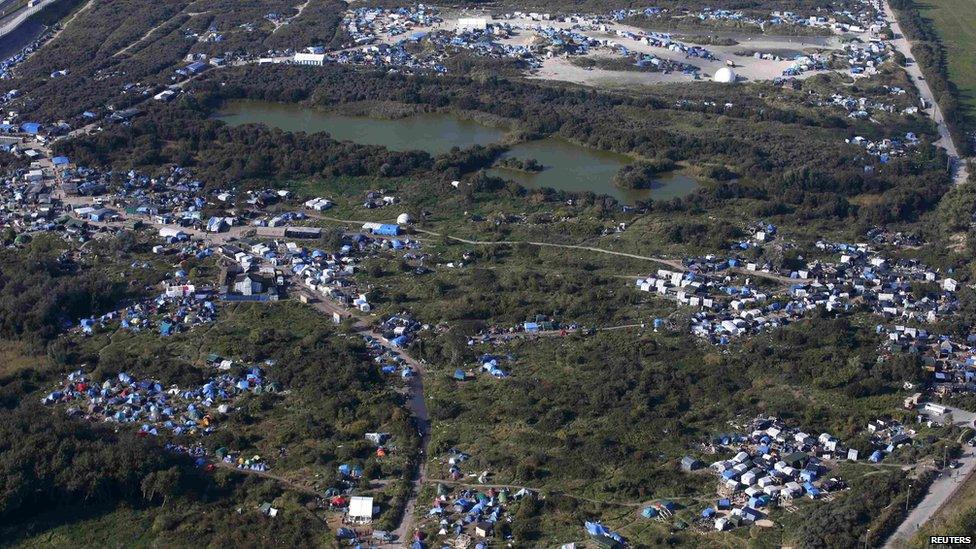
The "jungle" last year - the area below the lake was demolished earlier this year
By 2014, many more people had made their way to Calais.
This time they came from Syria and other Middle Eastern countries, as well as African countries like Somalia and Eritrea.
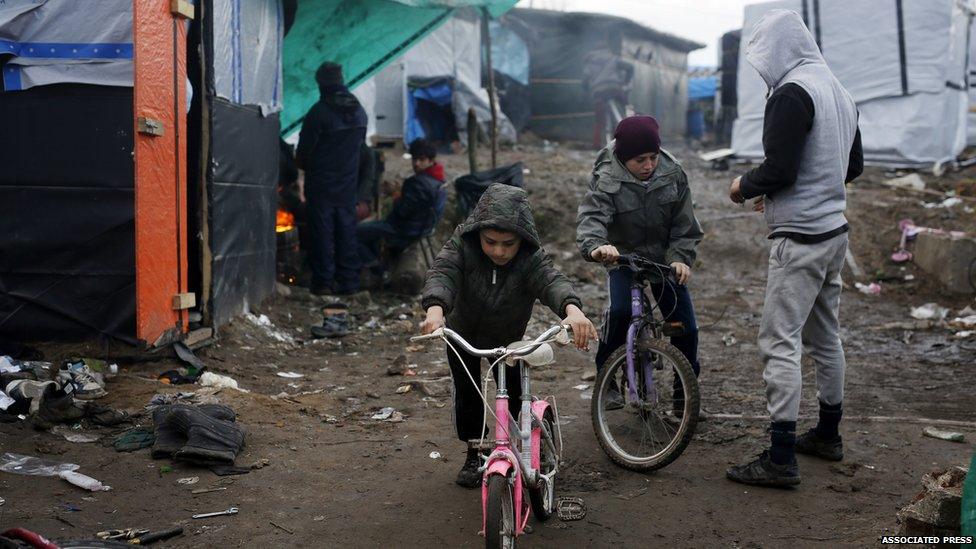
Some children have spent up to two years in the camp
The conditions became similar to those at the Sangatte centre in 1999.
The French government had to open a migrant centre because there were so many people living in parks and on the streets.
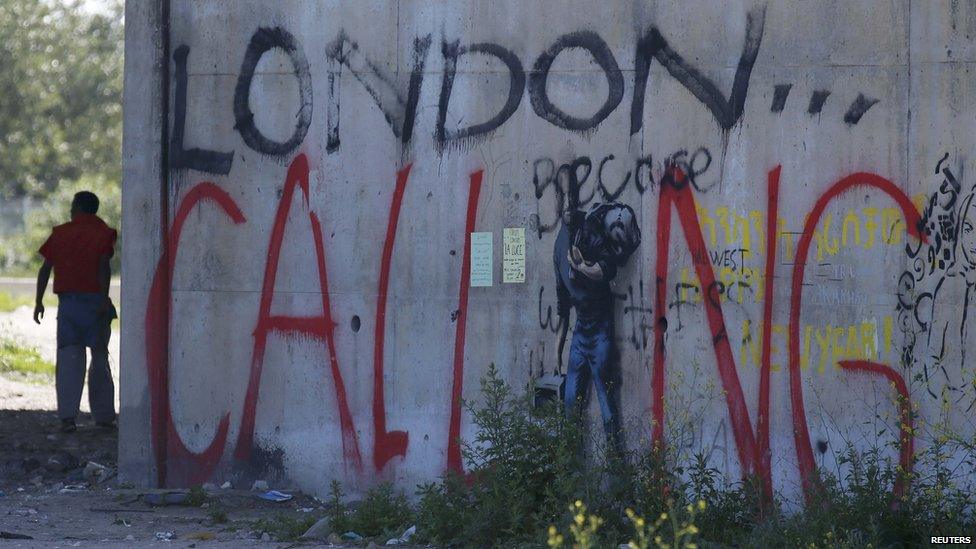
Graffiti at the camp - part of the reason it is in Calais is because migrants want to come to the UK
But what started as a refugee population of 1,300 has now swelled to an estimated 7,000 and has created a new "Jungle".
Some parts of the camp were demolished earlier this year, with the rest due to follow this week.
But it's unclear what will happen to all the migrants.
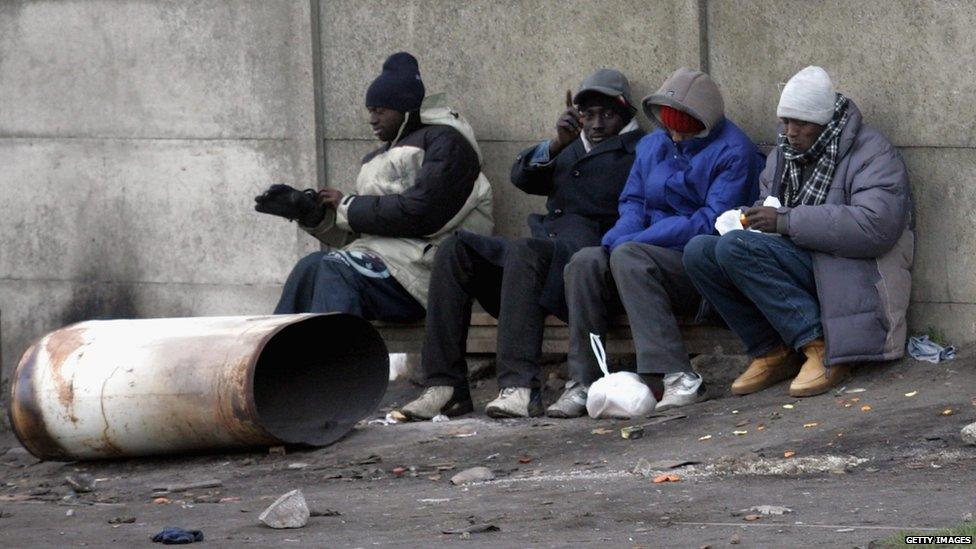
Young men make up a lot of the camp's population
Last time the camp was demolished, it sprung up again quickly.
New camps are already appearing in the northern part of France near the Calais area.
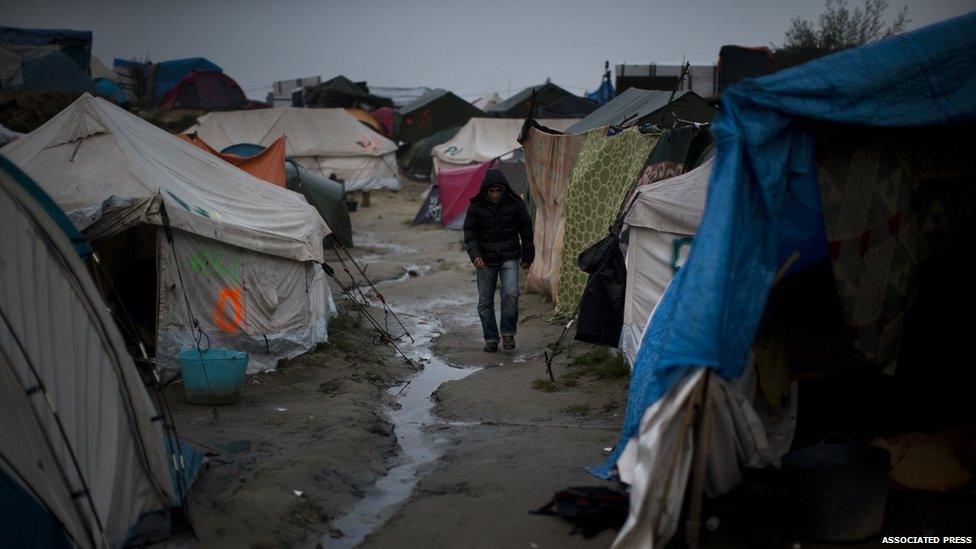
What will the future hold for residents of the camp?
Watch on YouTube: Why migrants come to the UK, external
Find us on Instagram at BBCNewsbeat, external and follow us on Snapchat, search for bbc_newsbeat